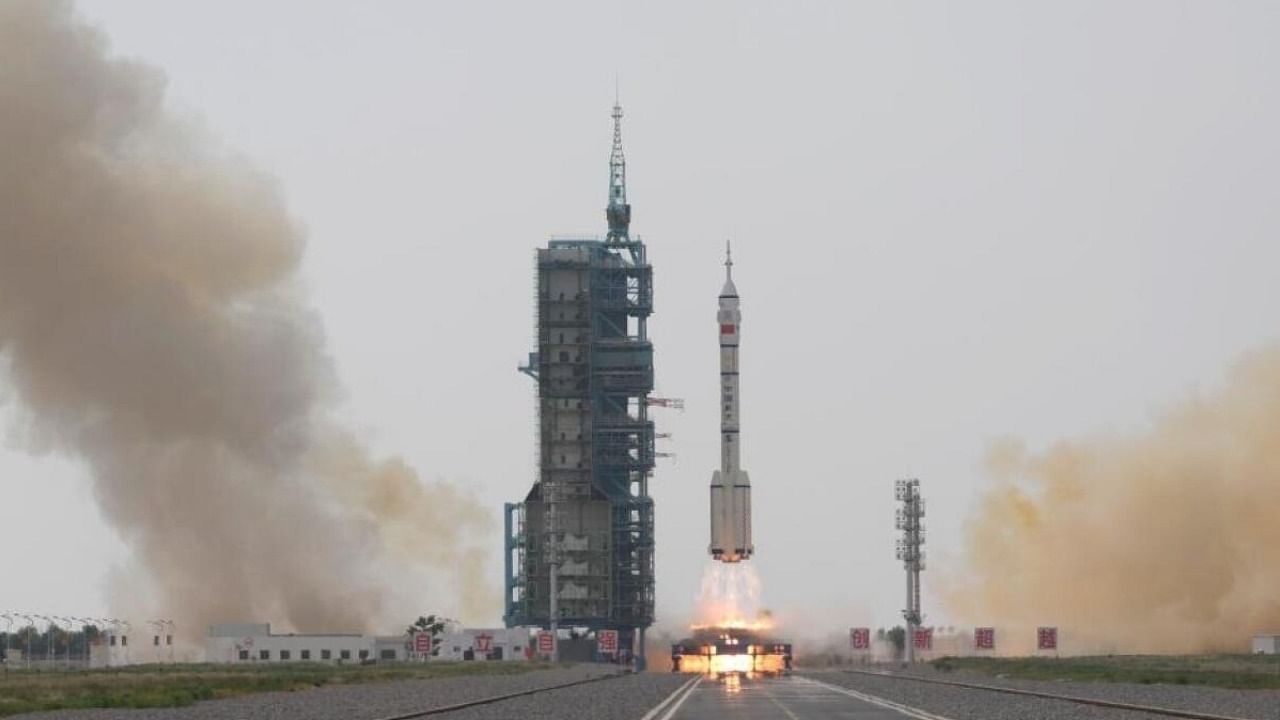
China’s space programme is in news again after it created a new record when the Long March rocket system successfully place 41 satellites in space during its 476th mission. Beijing achieved this feat on June 15 and also announced that it is aiming to land astronauts on the moon by 2030. This followed the successful replacement of the crews on the Tiangong Space Station in May. Beijing had sent a civilian into space for the first time.
China’s space programme is one of the most successful in the world, and it has invested billions of dollars. In a very short time, Beijing has achieved a number of milestones: building of space station, spacewalk, launching multiple satellites, anti-satellite weapons, etc. These put Beijing at the top in the space arena after the United States and Russia. It is believed that under President Xi Jinping China’s space programme has been pushed to new heights. The success of the lunar launch will make it a fully established space power.
Space is political, and it is the new area where power rivalries and assertions are going to take place. No surprises that when the US expressed its disagreement over China being part of the International Space Station (ISS) because the space programme has been very much directed and moulded by the People’s Liberation Army (PLA), Beijing decided to work on its own programme and built its own space station. What is interesting is that the US with support from the private sector is looking to again put astronauts on the moon by 2025, and regain some of its lost edge. Such renewed focus underscores the importance of space technologies and a functioning space programme.
The centrality of space technologies is a reality today. From entertainment, day-to-day functioning, sports and economies to defence all are embedded in space technologies. With satellites guiding the whole world and economies, every country is keen to have its own space presence and a working satellite. The dual use and spin-offs from the space technologies have the capability to assist countries’ developments. It is also projects space power and status.
For China, the space programme has been more than just a technological venture. It has been used by the Chinese Communist Party (CCP) to assert and infuse nationalism while highlighting the rise of China and the growing decline of the US. It has been used by the CCP to push for more legitimacy and support from the people. It has also helped strengthen China’s soft power image as Beijing has been involved in launching satellites for several countries.
As China becomes stronger in space, the power dynamics over policies and rules which govern it will also be questioned. Beijing will look for more influence and participation, and will also be keen to mould the existing ground realities. Given that Beijing is so close to becoming a space power and will be possessing capabilities to openly challenge the US, can the peace in space be maintained and if it can, then for how long? Will space become an expression of other existing conflicts on ground?
How does China's space programme compare to India’s? A major difference has been that the Indian space programme has been a civilian programme, while China’s is military. The Chinese space programme boost a budget of $13 billion, while the Indian space programme stands at just $1.6 billion. This figure is enough to provide a sense of the gap that exists between the two neighbours, and calls for renewed focus from New Delhi’s side.
Today space technologies are essential for power and prestige in the international system. The military aspect of space will help Beijing have an upper hand in case of any conflict and can help it gain more real time information regarding the ground movement of the militaries. Space may look distant, but today it is one of the necessary tools for proper functioning of civilian, economic and defence sectors.
(Gunjan Singh is Assistant Professor, OP Jindal Global University.)
Disclaimer: The views expressed above are the author's own. They do not necessarily reflect the views of DH.